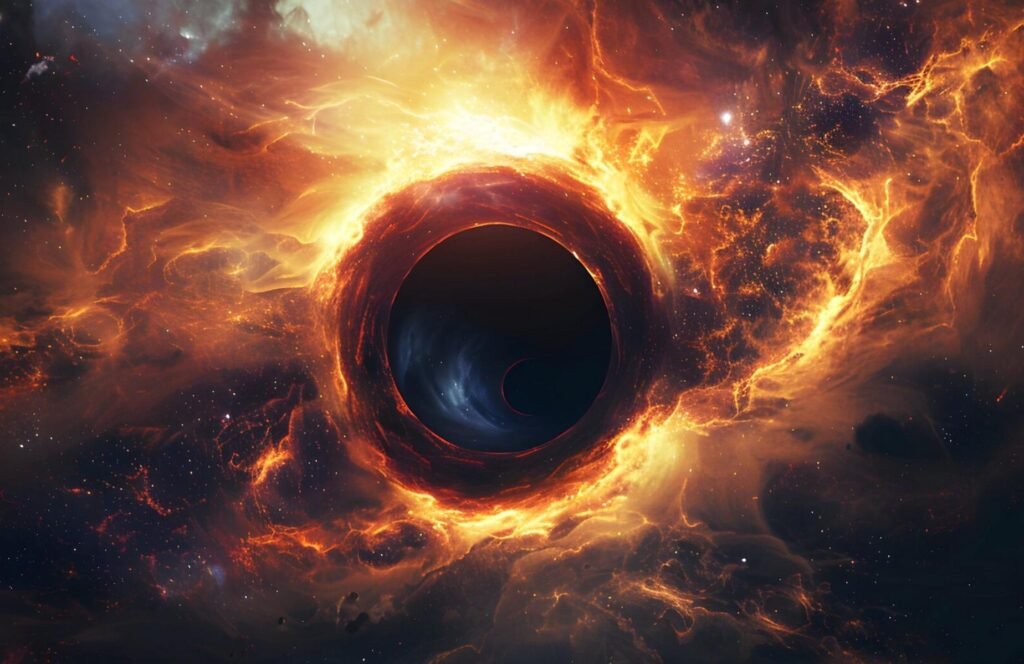Astronomers have confirmed the oldest black hole ever found, lurking in a distant galaxy called CAPERS-LRD-z9, just 500 million years after the Big Bang. This discovery, made with the James Webb Space Telescope, pushes back our understanding of how these cosmic giants formed in the universe’s early days and challenges existing theories.
Breaking New Ground in Space Exploration
Scientists from the University of Texas at Austin led an international team to spot this black hole, which existed about 13.3 billion years ago. The find came from a survey program that scans the cosmos for clues about the universe’s infancy.
This black hole sits at the heart of a small, red galaxy, shining brightly due to swirling gas and dust. Experts say it grew to hundreds of millions of times the Sun’s mass in a surprisingly short time.
The team announced their results in a major science journal this month, sparking excitement among researchers worldwide.

How the James Webb Telescope Made It Possible
The James Webb Space Telescope launched in 2021 and has revolutionized our view of the distant universe. Its advanced instruments captured light from CAPERS-LRD-z9, traveling across billions of light years to reach us.
Researchers used spectroscopy to analyze the light, spotting shifts that reveal fast moving gas around the black hole. This method confirmed the black hole’s presence beyond any doubt.
Unlike earlier candidates, this one shows clear signs of an active galactic nucleus, where the black hole devours material at a rapid pace.
Experts note that without Webb’s sensitivity, such early objects would remain hidden. The telescope has already uncovered other ancient galaxies, but this black hole stands out as the earliest confirmed.
Here are key tools that helped in the discovery:
- Near Infrared Camera for initial imaging.
- Mid Infrared Instrument to detect heat signatures.
- Near Infrared Spectrometer for detailed light analysis.
- Data from surveys like PRIMER to pinpoint targets.
Why This Black Hole Challenges Old Ideas
This find suggests black holes formed and grew much faster than models predicted in the universe’s first billion years. Current theories struggle to explain how such massive objects appeared so soon after the Big Bang.
The black hole’s size, about half the mass of its host galaxy’s stars, hints at rapid growth through mergers or intense feeding.
It also ties into “Little Red Dot” galaxies, which appear compact and bright in Webb’s images. These might be early stages of galaxies we see today.
To put this in perspective, consider this comparison of early black holes:
| Black Hole | Age After Big Bang | Mass (Sun Masses) | Distance (Billion Light Years) |
|---|---|---|---|
| CAPERS-LRD-z9 | 500 million years | Up to 300 million | 13.3 |
| CEERS 1019 | 570 million years | Smaller, around 10 million | About 13.2 |
| Recent Merger (2024 find) | 740 million years | 50 million each | 13.1 |
This table shows how CAPERS-LRD-z9 outdates others and raises questions about cosmic evolution.
Linking to Our Place in the Universe
Imagine gazing at the night sky and knowing that light from this black hole started its journey when the universe was a toddler. It makes the cosmos feel both vast and connected to our own story.
For everyday people, this discovery reminds us how far science has come since the Hubble era. Just a few years ago, spotting such distant objects seemed impossible.
It also sparks wonder about black holes in our Milky Way, like Sagittarius A star, which is much younger at about 4 million solar masses.
Researchers point out that understanding these early monsters could explain why galaxies look the way they do now, including our own.
In 2025, with ongoing Webb missions, more finds like this could rewrite textbooks and inspire the next generation of stargazers.
Personal stories from astronomers add a human touch. One team member shared how late night data analysis felt like unlocking secrets from the dawn of time, blending hard work with awe.
What It Means for Black Hole Theories
The black hole in CAPERS-LRD-z9 supports ideas that some formed from dense cosmic seeds right after the Big Bang. This could solve the puzzle of their quick growth.
Alternative views suggest mergers of smaller black holes, but evidence here leans toward fast accretion of gas.
Balancing perspectives, not all experts agree. Some argue we need more data to rule out other explanations, like unusual star formation.
This debate keeps the field dynamic and pushes for better models.
Looking Ahead to More Discoveries
The team plans deeper observations of CAPERS-LRD-z9 to measure its exact mass and study surrounding dust. This could reveal how black holes shaped early galaxies.
Future surveys with Webb might find even older candidates, testing the limits of current technology.
Collaborations with other telescopes, like the upcoming Nancy Grace Roman Space Telescope in 2027, promise broader insights.
As we learn more, these findings could influence everything from astrophysics to our grasp of time and space.
What do you think about this cosmic breakthrough? Share your thoughts in the comments and pass this article along to fellow space enthusiasts. Your input could spark great discussions.